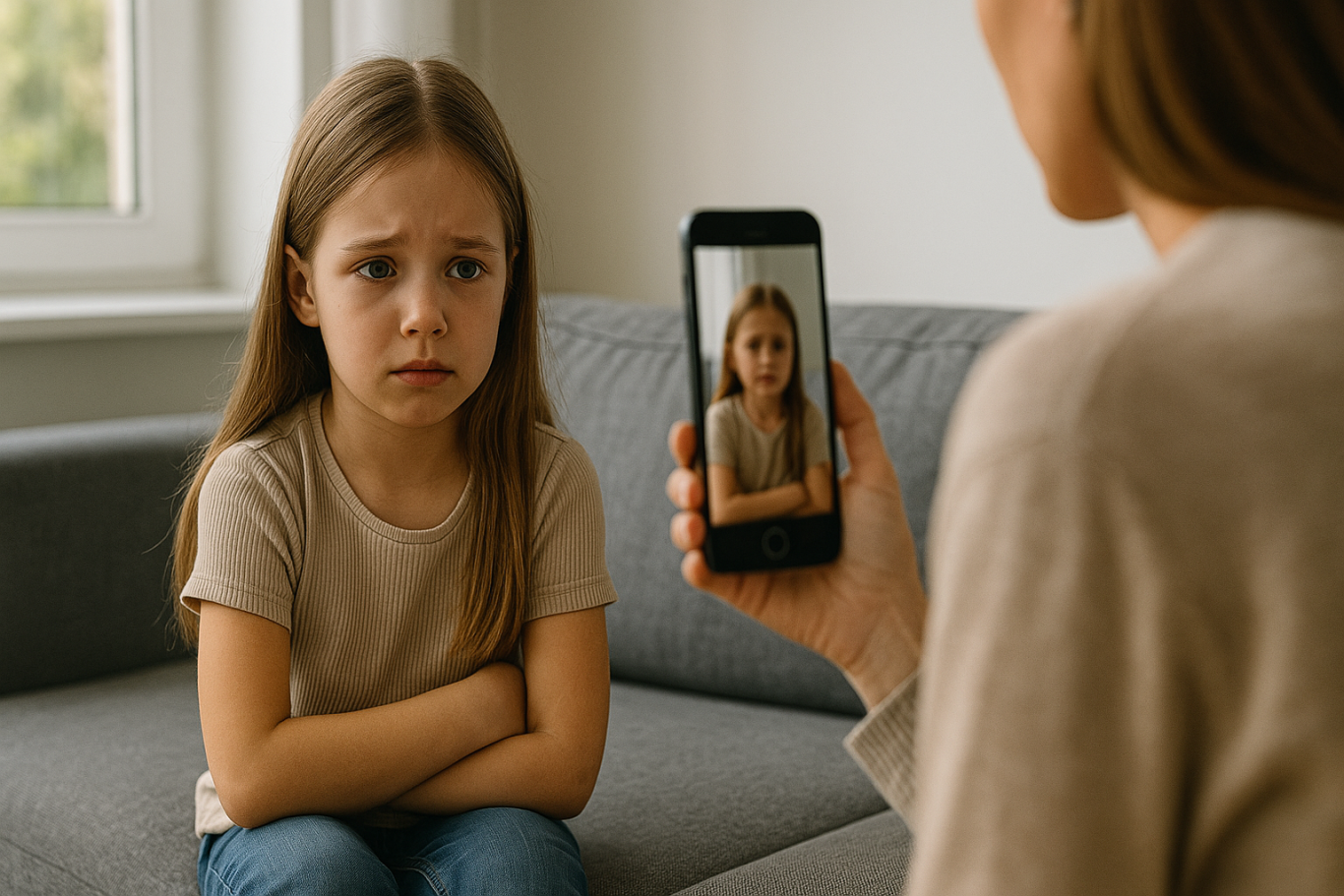The Phenomenon of Child Exploitation by Influencers: A New Parenting Challenge in the Digital Era 2025
In recent years, the rapid growth of social media has given rise to countless influencers with millions of followers. It has become increasingly common for these influencers to feature their children in content to gain more attention, likes, and financial benefits. However, this trend does not always have a positive impact. Child exploitation has become a growing concern, especially when children are used as tools to boost popularity or generate income online.
This article takes a deeper look at the phenomenon of child exploitation by influencers, the potential effects on children’s development, and the important roles of parents and society in addressing this issue.
What Is Child Exploitation in the Digital World?

Child exploitation in the digital era refers to situations where children are excessively used for content creation, economic gain, or popularity, without regard for their rights, comfort, or future. In the influencer world, child exploitation often appears in the following ways:
- Children are made the main stars in family content, pranks, or toy unboxing videos.
- Children’s private lives are continuously exposed to the public, sometimes including sensitive moments like anger, sadness, or other personal experiences.
- Children are asked to promote products, do endorsements, or follow trends that may not be appropriate for their age.
- The profits generated from this content are not used for the benefit of the child, or the child is never given a voice in these decisions.
Why Is Child Exploitation by Influencers Such a Serious Problem?
There are several reasons why child exploitation by influencers is a serious issue:
- Violation of Children’s Rights
Every child has the right to privacy, to grow and develop healthily, and not to be treated as a commercial object. When child exploitation happens on social media, these rights are often ignored in pursuit of popularity. - Mental Health Risks
Excessive exposure to the public eye can make children feel pressured, unsafe, or even anxious. Negative comments, online bullying, and the expectation to always be perfect can impact a child’s psychological development. - Lost Childhood
Children who are constantly on camera, have to act for content, or are heavily involved in content production are at risk of losing out on natural moments of play and age-appropriate learning. - Long-Term Consequences
Child exploitation can affect a person well into adulthood. They may struggle to form their own identity, suffer from low self-esteem, or regret their digital footprint that has already spread widely.
Warning Signs of Child Exploitation by Influencers
Parents and society need to be vigilant about these warning signs:
- The child looks uncomfortable, forced, or often cries during filming.
- The child is made to do things that are not age-appropriate for the sake of content.
- All of the child’s activities are documented and shared publicly without limits.
- Parents seem more focused on views, likes, and comments than the child’s well-being.
- The child is never asked for their opinion about their participation in content.
The Role of Parents: Setting Boundaries, Ethics, and Responsibility

Parents play the most important role in preventing child exploitation in the digital world. Here are some steps that can be taken:
- Respect Privacy Boundaries
Not every moment of a child’s life needs to be shared publicly. Respect their privacy, especially if they show reluctance or discomfort. - Prioritize Mental Health
Make sure children do not feel pressured, are not overexposed, and have space to be themselves off-camera. - Involve Children in Decisions
Talk to your child before making content together. Listen to their wishes and feelings. - Educate About Digital Risks
Help your child understand the consequences of digital footprints, cyberbullying, and the long-term impact of online content. - Focus on the Child’s Needs
If content generates income, ensure the child’s rights are protected. Prioritize education, comfort, and development, not just popularity.
Society and Policy Makers Have a Role Too

Beyond parental responsibilities, society and policy makers must work together to address child exploitation. Governments need to strengthen regulations on child protection in the digital world, including rules on commercial content involving children, transparency in managing a child’s earnings, and education for both influencers and parents.
The public can also help by raising awareness or speaking up when they see content that involves child exploitation. A supportive environment is crucial to ensure this trend is not normalized or justified as mere entertainment.
Teaching Children Boundaries in the Digital Era

It is also important for parents to help children understand their own rights and boundaries online. Include them in discussions about what is appropriate to share on social media, and encourage them to say no if they ever feel uncomfortable. This helps children grow up with confidence and a healthy sense of self-protection from an early age.
Protect Children Wisely and Build Digital Skills
Child exploitation by influencers is a real challenge in the digital age that cannot be ignored. Parents, society, and policy makers need to work together to protect children from excessive exposure and pressure online. Always put children’s rights, well-being, and future first.
In addition to limiting children’s exposure on social media, parents can equip their children with positive skills that are relevant for the digital era, such as learning to code. By joining coding classes at Timedoor Academy, kids can nurture their creativity, develop logical thinking, and explore technology in a fun and safe way, without needing to be in front of the camera.

Ingin tahu detail program?
Sign your child up for a free trial class at Timedoor Academy so they can experience engaging, educational coding lessons that build confidence. Let’s make social media a platform for education and creativity, not a tool for child exploitation in the name of popularity.